Packaging and parameters
Routers, for the most part, are not among the design-appealing devices you’d want to show off. They are usually white or black boxes with antennas sticking out of them and you hide them somewhere behind your computer, TV or in a closet. But that doesn’t have to be the rule, and the new Asus ZenWiFi Pro XT12 is proof of that. In addition to the unconventional design, the tested model impresses with its focus on mesh networking, which Asus routers are known for.
Packaging and exterior
The XT12 has not avoided the traditionally colourful and beautiful design of the box, and the description on the back is also aimed at presenting the mesh solution and its advantages.
Since it’s a two-pack, there’s double of everything inside the box, so two routers, power cables and adapters. Somehow, however, there’s only one LAN cable, and you only need one documentation as well.
The XT12 impresses at first sight with its unconventional design. It is a kind of cube with a square base, 11.5 cm long and 24.1 cm high, the top is transparent and one of the corners is bevelled.
Most routers have two or four antennas. The XT12 received up to ten internal ones, which is understandable given its support for up to three bands, but still quite unique.
Routers targeted for use in a mesh network typically do not offer the same features as dedicated routers sold one at a time. Still, you get two for the price of one. The XT12, however, is somewhat unique in this area. It offers a quartet of RJ-45 connectors, two of which are 2.5 Gb and the other two 1 Gb. One of the faster pair is designated as a WAN port and the other is used for LAN.
As we already know from tests of the AX88U, for example, we can transfer speeds higher than 1 Gb over WiFi 6, which means that the wired connection is slower than the wireless one, which is quite illogical. The top model AX89X solved this problem with 10 Gb ports, which are not yet found in cheaper models. When testing the inexpensive RT-AX53U, I introduced the idea that 2.5 Gb connectors would make a lot of sense for WiFi 6 routers, and the XT12 is the first model where we can see this idea in practice.
What did not please me, on the other hand, is the complete absence of USB ports. I consider this a big oversight, as even the cheapest pieces already have at least USB 2.0, although the 3.0 standard would have been better. I’ve been using the USB port for a year now to connect a 2.5″ SSD and fast and easily accessible storage that you can connect to a PC anytime if you need to, but the vast majority of the time the drive is just connected to the router. Among other things, the USB port could also be used to connect a printer or other accessories, and you’ll unfortunately lose all of that with the XT12.
The RGB backlit logo, which also serves as an information LED about the router status, tries to save the situation. Inside the router we find 256 MB Flash, 1 GB RAM and a 2.0 GHz quad-core 64-bit processor, which makes it one of the better pieces. Important from the router’s point of view are the configurations of the individual bands. The XT12 offers a 4×4 configuration for both the 2.4GHz and both 5GHz networks, making the theoretical maximum speeds 1148 Mbps for the 2.4GHz and 4804 Mbps for each of the 5GHz networks. Overall, the router thus offers bandwidths of up to 11 Gbps (1148+4804+4804), but this is more of a marketing designation, especially when the manufacturer refers to it as the AX11000 ultimate AX performance. But it doesn’t change the fact that the XT12’s wireless connectivity is really excellent. It is also important to mention that the router offers the important 160 MHz band, which was introduced along with WiFi 6 and is one of the important features of this standard.
Of the WiFi 6 new features, OFDMA and TWT are not missing, which is just a plus. The overall equipment of the XT12, except for the lack of USB ports, looks very good on paper and in practice. Another interesting feature is the ability to aggregate 1 Gb LAN connectors to achieve 2 Gb speeds for connection to, for example, a NAS. A better solution would be to have all ports 2.5 Gb, but we will hopefully see that in a future model. Software support and installation via the web GUI but also the app is great as always and there is probably no point to elaborate on this topic anymore. If you’re interested, I recommend reading some of the older Asus router tests.





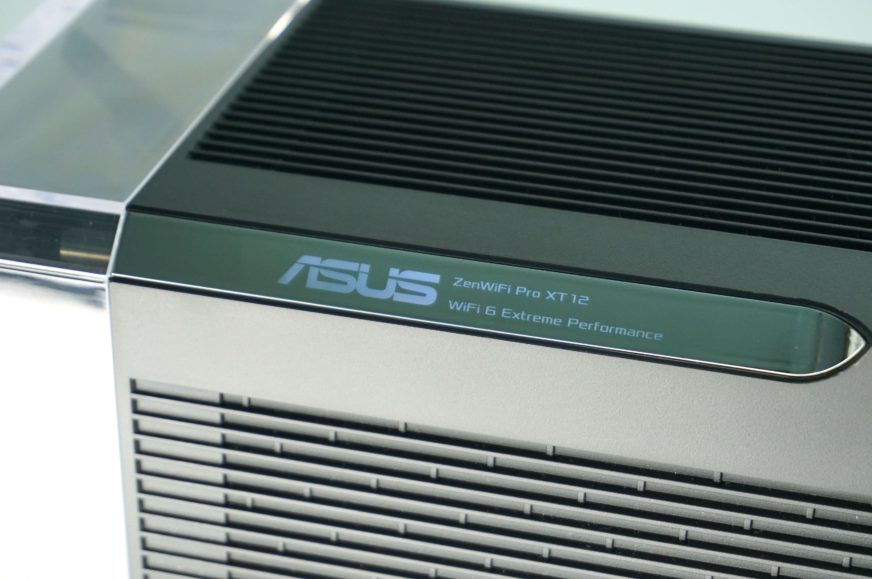
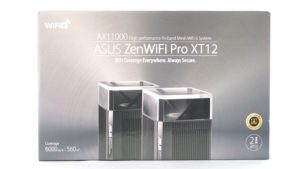
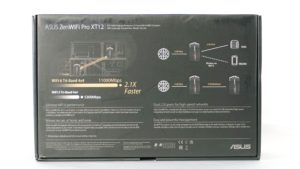
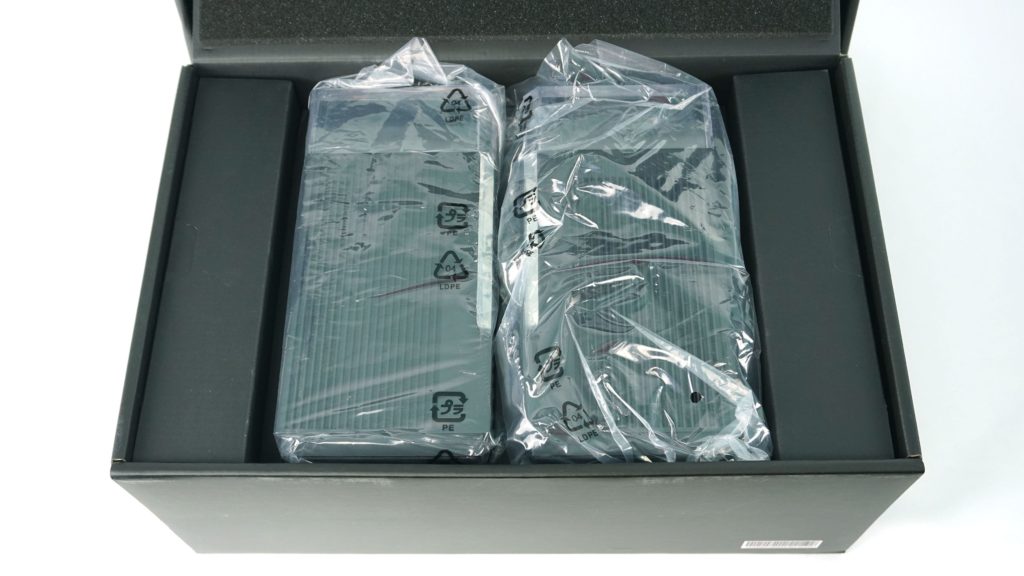
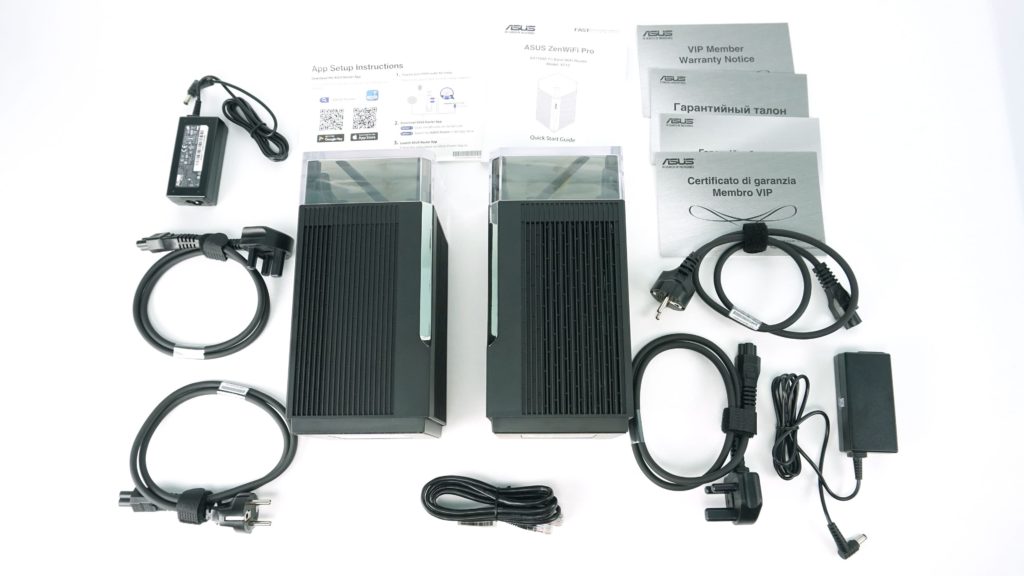
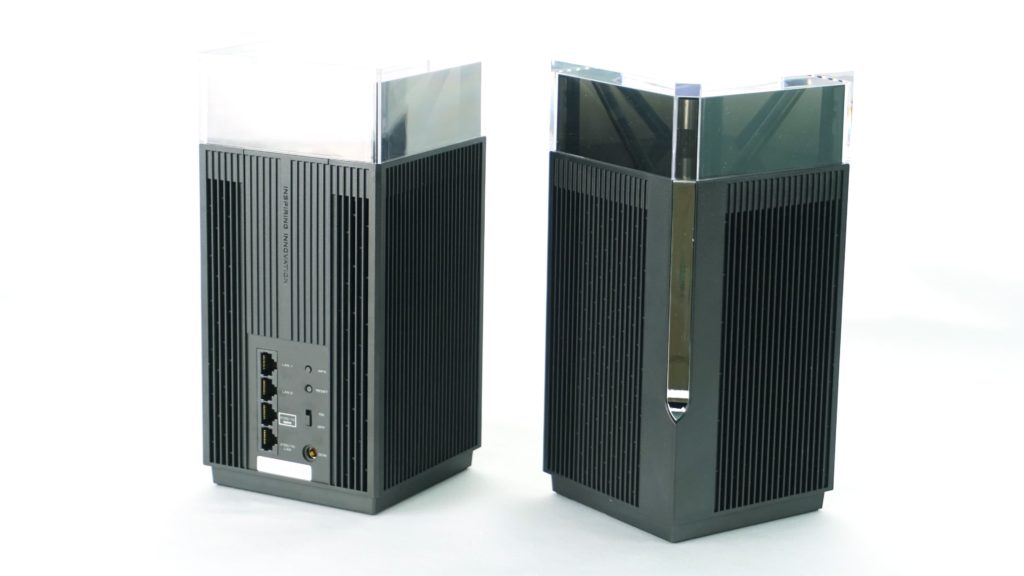
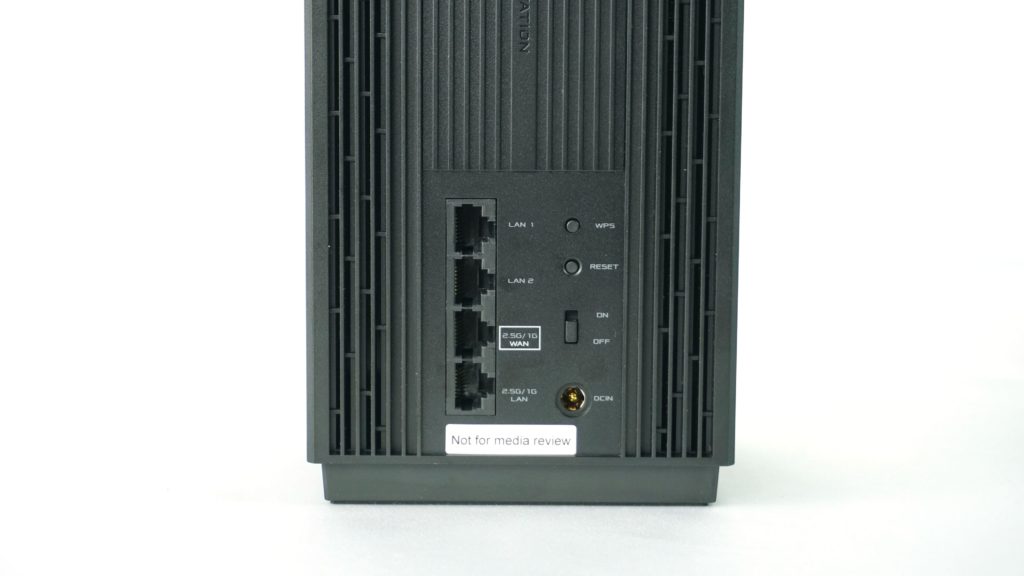
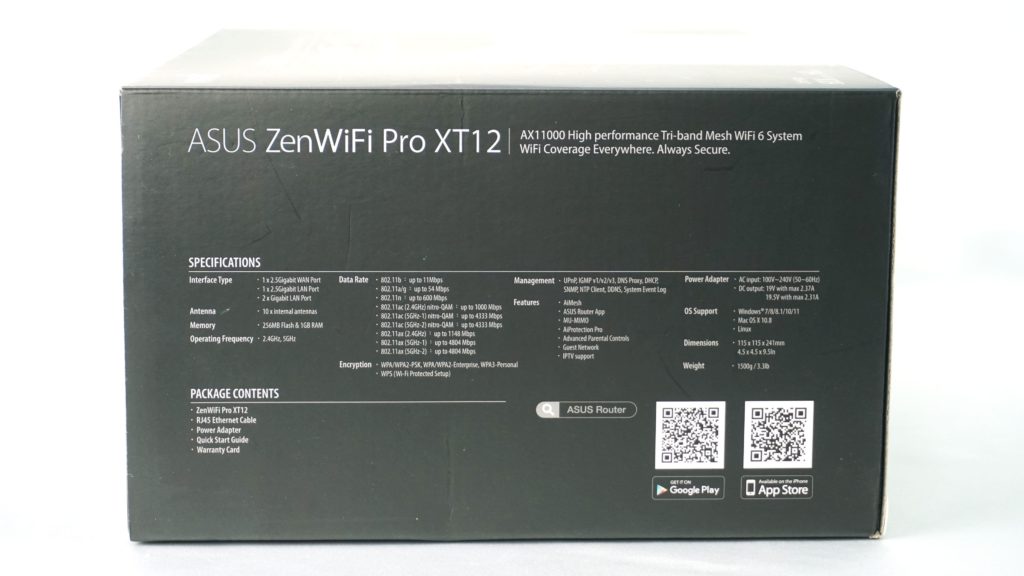
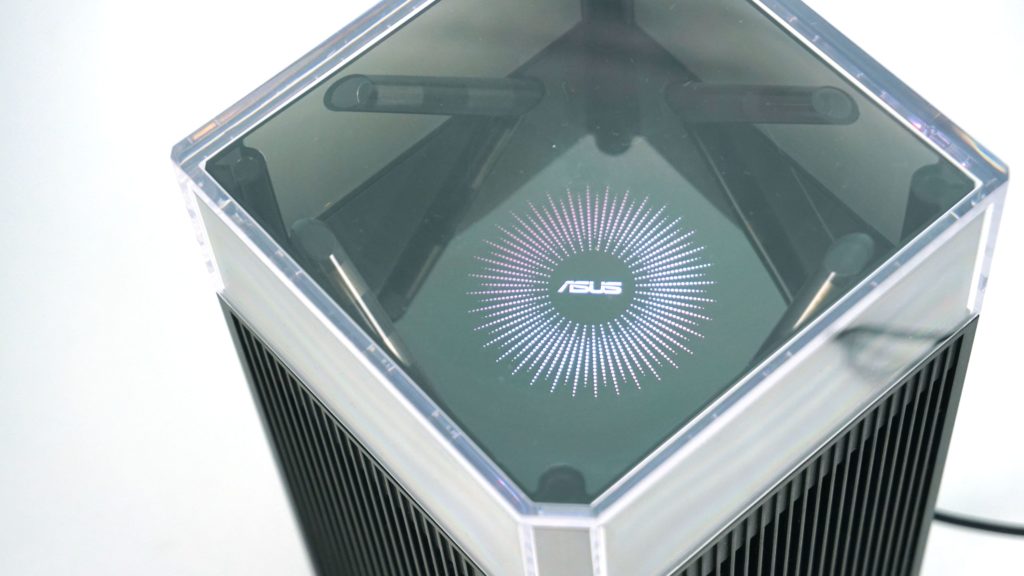
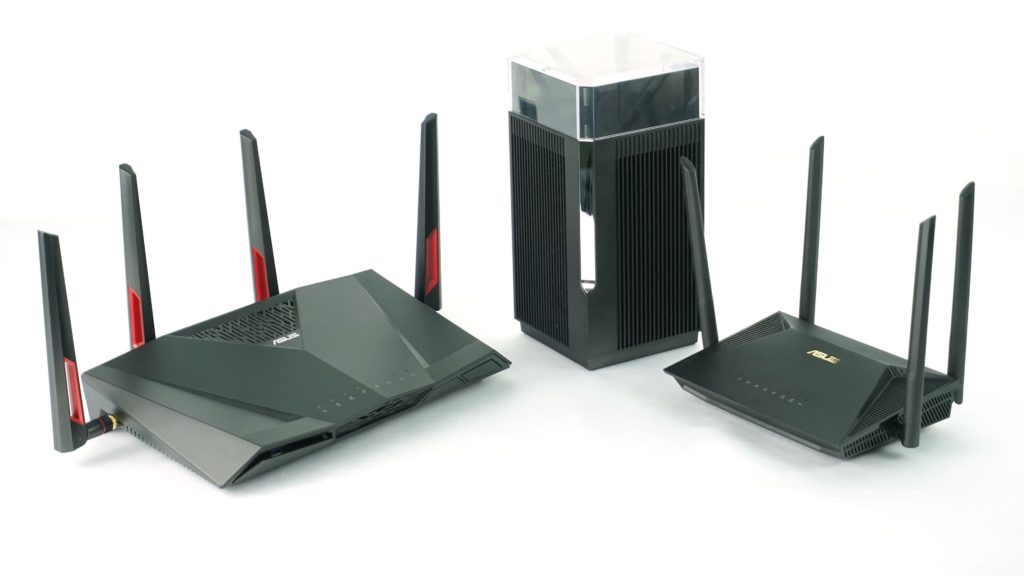






Finally they stop making routers that are too big to put on a desk. I don’t understand why they were putting so much work in design or RGB stuff for a router that you can’t put in a desk anyways. On top of that it actually still was ugly with those antennas sticking out and always falling… And lastly wifi routers should never be put on a desk because that affects the range of your WiFi signals, this is too close to the floor or other electronics that can interfére. Wifi routers work best when pour at least 1.8,m height, because then they have better line of sight to clients. And they better penetrate walls, because wall outlets and other electric cables running in the walls are all below 1,5m height. Same thing with waterer tubes or heating radiators, they all block wifi, because water blocks radio signals. .Putting your router higher then 1,5m gives therefore much better wall penetration and higher speeds.
Do why make something beautiful that you need to put high anyway, to make it work better?
What I also miss with Asus : is outdoor acces points for wifi in the garden (cameras, smart lawnmower,etc..) asus is the only wifi brand that doesn’t have an outdoor solution
According to them there is no weekend because nobody gives this feedback on their Helpdesk, surveys,feature request s,etc..
Everybody: if you want outdoor wifi routers, let them know…